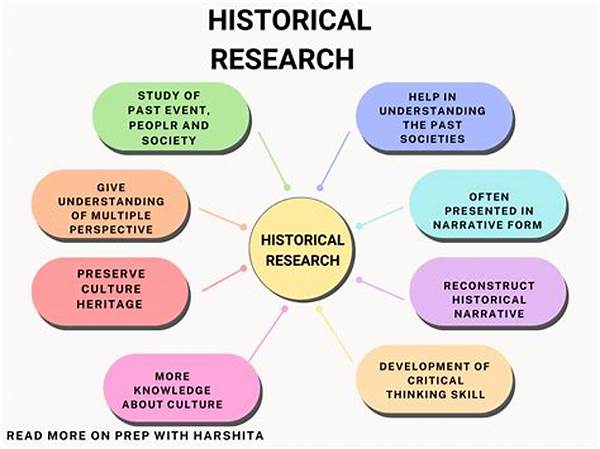Imagine being able to time travel, not just through words on a page, but through the sounds and images of the past. That’s precisely what audiovisual sources offer to historical researchers and cultural enthusiasts. They provide a rich tapestry of context, emotion, and detail that can transform our understanding of history. If you’ve ever watched a historical documentary or listened to an old radio broadcast, you’ve experienced the immediacy and impact that audiovisual media can bring. Picture yourself as a cultural detective unraveling mysteries with unparalleled vibrancy. The mystery doesn’t lie in the past alone, but in how we bring it to life today.
Read More : Examples Of Audiovisual Media Making Online Product Demonstrations Powerful
In today’s digital age, where memes go viral and videos become our diaries, we often overlook the power of audiovisual content as a serious tool for historical research. Yet, as surprising as it might sound, these sources are increasingly critical for ensuring cultural continuity. So, why should you care? Well, consider this your invitation to explore the benefits of audiovisual sources in historical research. This exploration isn’t just academic – it’s about making history more relatable, fun, and comprehensive.
The Multisensory Experience of Audiovisual Sources
Audiovisual sources provide a multidimensional approach to studying history. Unlike traditional text-based sources, audiovisual media such as films, recordings, and photographs can evoke sensory experiences, making historical events more tangible and relatable. Can you hear the crackling of vintage records as they narrate stories of bygone eras? This vividness makes these sources invaluable for cultural continuity.
Audiovisual records capture nuances that words cannot always convey – the tone of a voice during a significant speech, the ambient sounds of a historical event, or the visual context surrounding an important cultural moment. These elements help provide a fuller picture and foster a deeper emotional connection to the past.
Preserving Intangible Cultural Heritage
When discussing the benefits of audiovisual sources in historical research for cultural continuity, it’s crucial to focus on intangible cultural heritage. Audiovisual materials play a significant role in preserving traditions, languages, and practices that are often at risk of fading. For instance, visual documentation of traditional dances or audio recordings of endangered languages not only preserve this knowledge but also keep them accessible for future generations.
The benefits don’t end there. These sources offer educational tools that breathe life into cultural studies, making them more engaging and interactive. Imagine students watching historical footage that brings textbook events to life – it’s history taught with a cinematic flair!
Bridging Generations With Audiovisual Media
Audiovisual sources act as a bridge between generations, enabling younger people to connect with their heritage in a way that pure text might not achieve. Moving images and sounds can convey the feelings and dynamics of a previous era more compellingly than any written description.
Understanding history through audiovisual materials allows newer generations to comprehend complex historical contexts, propelling them toward a future where they appreciate and perhaps champion cultural continuity. They become not just passive recipients of history, but active participants in its unfolding narrative.
How Audiovisual Sources Enhance Historical Research
Now, let’s take a deep dive into how these audiovisual sources are used in practice. Scholars and researchers often leverage audiovisual media for a more accurate depiction of events. The methodology involves analyzing films, photographs, and audio records alongside traditional sources to corroborate facts and fill in the gaps that text alone tends to leave wide open.
Researchers agree that integrating audiovisual sources into their investigations enhances the credibility and richness of historical narratives, offering a more nuanced picture of the past. Who wouldn’t desire that fuller, richer picture while unraveling historical truths?
Read More : Affordable But High-quality Audio Visual Solutions For Smes
Promoting Cross-Cultural Understanding
One cannot underestimate the benefits of audiovisual sources in promoting cross-cultural understanding. Witnessing cultural practices through video or listening to stories told in native languages fosters empathy and global awareness. It allows people from different backgrounds to appreciate cultural diversity and realize the interconnectedness of the human experience.
To illustrate, consider documentaries showcasing cultures from different continents, or audio recordings detailing life in varying socio-political climates. These serve as powerful educational tools for cross-cultural dialogue and awareness.
Details and Examples of Audiovisual Benefits
To bring these benefits into sharper focus, here are examples of how audiovisual sources operate as conduits for historical and cultural exploration:
Rationale and Emotional Appeal
Now, let’s be rational about it: As trained historians or simply enthusiasts, wouldn’t you want the richest, most diversified exploration possible of the past? Audiovisual sources provide those rich layers, marrying facts with emotions in a way that is rare with text alone. The emotional appeal of these media makes them indispensable for fostering a connection to history and cultural continuity.
Conclusion: The Future is Visual
In summation, the benefits of audiovisual sources in historical research for cultural continuity are multifaceted, bridging the gap between past and present in the most vivid way possible. They add texture and context to our understanding of history, transforming mere facts into chronologies alive with insight and resonance.
History is, after all, a story – and the best stories are not just told but shown and heard. In embracing the benefits of audiovisual sources, we stand poised on the brink of a new frontier in historical research and cultural preservation, ensuring that our shared narratives not only survive but thrive in the silicon age.
So, next time you delve into history, remember the power of sights and sounds in preserving the continuity of culture. It’s not just about keeping history alive; it’s about making it vibrate with the vibrancy it once had, ensuring its echo is not lost to time.
